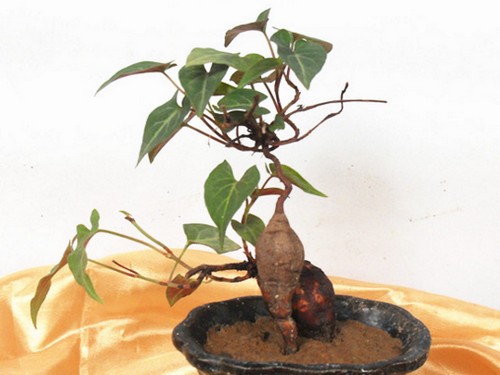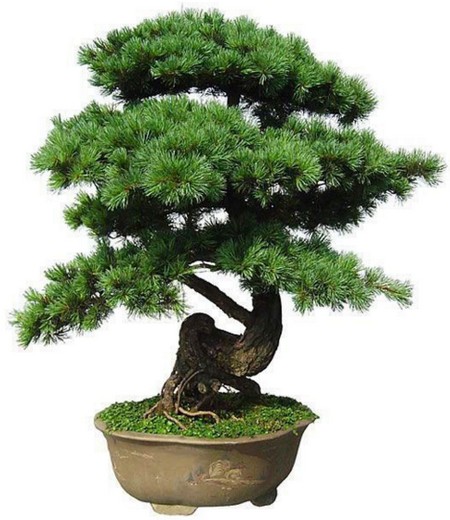Culture methods and matters needing attention of Penglai pine
Penglai pine is native to Natal, South Africa, Penglai pine plant erect, 30ml 60 cm high, is a perennial shrub-like herb of Liliaceae.
The cultivation and management of Penglai pine is relatively simple, generally fertilizing every half a month in spring and summer, mainly nitrogen and potassium, usually pay attention to basin soil can not accumulate water, otherwise it will cause rotten roots and yellow leaves, watering should be gradually reduced in autumn. The potted plants were changed in spring after 2-3 years. Cut off dense plants and long branches to facilitate ventilation and light. Cut off dead branches and yellow leaves at any time during the growing period to make the plant shape symmetrical and beautiful.

Select basin: Penglaisong should use purple sand pottery basin or glazed pottery basin. Just put on the pot cultivation, can first use the plain burning tile basin with good air permeability, and then change it into the elegant purple sand shallow basin after taking the basin. In addition to the cliff type with deep thousand-barrel basin or deeper square and round basin, generally rectangular medium-shallow basin is appropriate. The shape of the basin can also be determined according to the tree shape, such as the curved dry type can use a drum-shaped shallow round basin, the basin color can choose purple or light yellow.
Using soil: Penglai pine can adapt to many kinds of soil, but it is not resistant to salt and alkali, and it is better to use deep, moist, loose and slightly acidic sandy loam. Potted with mature pastoral soil, rotten leaf soil, appropriate amount mixed with sandy soil.
The seed is large, the seed coat is hard, soak the seed in clean water for 1 day before sowing, sow it indoors in April, the soil cover should not be deep, and keep 20-25 degrees Celsius at room temperature. Sprouted 15-20 days after sowing. The height of the seedling is 5 cm and can be transplanted. When ramet, change the pot in spring, hold out the mother plant, open the plant cluster, and plant separately.
Planting: Penglai pine is best before sprouting in March, and it can also be planted in autumn, but it is disadvantageous to root. When digging saplings, you should take shelter soil. You can cut short the overextended straight roots and cut off the withered roots. If planted in a shallow basin, you should pay attention to the fixation of the trunk, put the iron rod along the bottom hole of the basin, tie it to the thicker root with a slightly thicker wire, get out of the pot hole, and then tie it tightly on the iron rod, so as not to shake in the wind and loosen the root system, affecting survival.
Fertilization: fertilize once a month, apply more nitrogen and potassium fertilizer or Huiyou 20-80-20 use high potassium nitrate fertilizer in four seasons. The frequency of fertilization should not be too frequent, usually once a month, apply more nitrogen and potassium fertilizer or Huiyou use high potassium nitrate fertilizer in the four seasons.
Watering: in spring and summer, Penglai is most in need of water, but be careful not to accumulate water, otherwise it will lead to rotten roots and death. Need to regularly irrigate the right amount of water, can not let the soil too dry, otherwise the leaves will be yellow, withered phenomenon. In the midsummer of high temperature, strong light or lack of light, the leaves will also cause yellowing, withering and falling leaves, and the temperature will drop after autumn and gradually reduce watering. Sufficient water is needed during the growing period of spring and summer, but not too much water, otherwise the roots will rot. The basin soil is too dry, and the leaves are yellowed, resulting in withered or withered leaves.
Processing: the processing and modeling of Penglai pine can be dominated by climbing and pruning as a supplement. Climbing with wire or brown wire. Penglai pine branches are relatively soft, easy to climb with wire, flexion and extension freely. If the saplings of 2 ~ 3 years old are taken as materials, the trunk is bent to a certain extent, the branches hindered by the shape are cut off, and then the retained lateral branches are tied into a horizontal or slightly drooping shape, and then the wire is removed after growing for one year, the angle is re-adjusted, and then climbing, it can be formed in a few years. Penglai pine stumps excavated in the mountains can not be processed in pots until the embryos are raised for a year. Pose modeling must be due to material treatment, make full use of the natural form of raw materials, a little artificial climbing, so that it has a natural wild interest.
Tree shape: Penglai pine bonsai can be made into straight dry type, oblique dry type, curved dry type, cliff type and so on. Straight dry type, vigorous tall and straight simple; oblique dry type, chic and healthy and vigorous; qu dry type, "meandering and bending back to flat potential, meandering and undulating dragon shape"; cliff type, gully cliff ancient pine, dangerous, Canglong probe head, want to dive all over the world. After 2-3 years of potted plants, the operation of changing pots should be carried out to reduce the extra dense plants and long branches, which is not only beautiful but also beneficial to growth.
Pest control:
It is mainly harmful to leaf blight and can be sprayed with 1000 times of carbendazim wettable powder. Insect pests include whitefly and scale insects, which can be sprayed with 1000 times of oxidized Dongguo milk.
Note:
The temperature of Penglai pine begins to grow above 15 ℃, and 20-30 ℃ is the most suitable for its growth. when the high temperature exceeds 35 ℃, the growth stops and the leaves turn yellow. in summer, we should pay attention to proper shading to prevent sunlight exposure, and often spray water to avoid burns or yellowing of branches and leaves.
Penglai likes warm, humid and semi-shady environment, which is more resistant to drought and cold. It is not strict to the soil, like the sandy loam with good aeration and drainage and rich in humus. Potted plants are often mixed with rotten leaf soil, land and river sand as substrates, and slightly mature base fertilizer is added when planting. Spring and summer is its peak growing season, which needs sufficient water, but it is not suitable to make the basin soil stagnant water, so as to avoid root rot; after the end of autumn, the amount of watering should be gradually reduced to make the basin soil slightly wet.
Penglai pine likes warm, humid and semi-shady environment, is not resistant to cold, is afraid of long-term exposure to strong light and high temperature, is not resistant to drought and stagnant water, and the suitable temperature for growth is 20-25 degrees Celsius; the winter temperature is not less than 10 degrees Celsius, less than 5 degrees Celsius is easy to freeze; the high temperature in summer exceeds 35 degrees Celsius, growth stops and leafy stems turn yellow. It is better to cultivate loose and fertile rotten leaf soil.
Time: 2019-06-01 Click:
- Prev

Culture method of Polygonum multiflorum bonsai
Polygonum multiflorum can be used as raw and mature. It can detoxify, eliminate carbuncle, moisturize intestines and defecate. Main treatment of ulcerative ulcer carbuncle, rubella itching, intestinal dryness and constipation. Shouwu has the function of tonifying liver and kidney, tonifying essence and blood, black hair and strengthening muscles and bones. Main treatment of blood deficiency and yellowing, dizziness and tinnitus, early white hair, sore waist and knees, limb numbness, avalanche and leakage
- Next

How to raise Penglai pine? Culture method of Penglai pine
Penglai pine, also known as pine bamboo grass, the plant is very beautiful, dense leaves, spherical shape, beautiful leaves, green and elegant. Its leaves are thick green and dense, it is the most popular flower arrangement foil material, and many homes like to plant this plant, so how to keep Penglai pine? What are the breeding methods of Penglai pine?
Related
- Fuxing push coffee new agricultural production and marketing class: lack of small-scale processing plants
- Jujube rice field leisure farm deep ploughing Yilan for five years to create a space for organic food and play
- Nongyu Farm-A trial of organic papaya for brave women with advanced technology
- Four points for attention in the prevention and control of diseases and insect pests of edible fungi
- How to add nutrient solution to Edible Fungi
- Is there any good way to control edible fungus mites?
- Open Inoculation Technology of Edible Fungi
- Is there any clever way to use fertilizer for edible fungus in winter?
- What agents are used to kill the pathogens of edible fungi in the mushroom shed?
- Rapid drying of Edible Fungi

